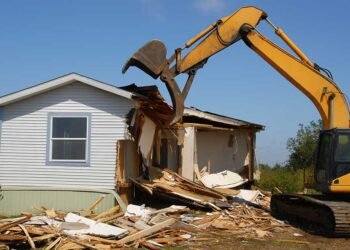What Are Cranes?
Cranes are essential machinery crucial in construction and various other industries. Their primary function is to lift and move heavy materials from one place to another, often to great heights or significant distances, making them indispensable in modern construction projects. Cranes come in many forms tailored to specific purposes and industries, making them versatile tools for any heavy-lifting task.
From small-scale projects to massive skyscrapers, cranes are vital to getting the job done effectively. Renting construction equipment can be cost-effective and provides access to the latest technology, ensuring your project runs smoothly.
Historically, cranes have evolved significantly. The earliest cranes were developed in Ancient Greece and were human or animal-powered. These rudimentary machines consisted of simple wooden structures with ropes and pulleys to lift heavy stones. Today’s cranes are mechanical marvels with hydraulics, electrical systems, and advanced control mechanisms. Standard components like the boom, counterweights, and cables work together to perform complex lifting tasks reliably and safely.
Understanding their development over centuries offers insight into how these machines have become integral to modern construction and industry.
Types of Cranes and Their Applications
Mobile Cranes
Mobile cranes are highly versatile and used across various industries. Their mobility allows them to be quickly relocated to different sites. These cranes can handle small residential lifts and large industrial projects. Their key advantage is the ease of transport and setup, making them ideal for short-term construction. Mobile cranes can be driven to different locations on public roads or transported on trailer trucks, making them convenient for varied tasks. If you’re embarking on a construction project, consider solutions for construction equipment rental to access these versatile machines.
Tower Cranes
Tower cranes are a common sight in urban areas where skyscrapers are being erected. These cranes are anchored to the ground and extend upwards to impressive heights. They play a crucial role in the skyline of any modern city, enabling the construction of tall structures by lifting heavy steel beams, concrete, and other materials to great heights. A single tower crane can lift over 18 metric tons of loads, making it indispensable for high-rise buildings and large construction projects.
Loader Cranes
Loader cranes, also known as lorry loaders, are mounted on trucks and are used primarily for loading and unloading cargo. These cranes are highly adaptable, with their compact design allowing them to operate in tight spaces. They are essential in logistics and transportation industries, where quick loading and unloading can significantly improve efficiency. The flexibility of loader cranes allows them to be used in urban settings and more remote locations.
Overhead Cranes
Overhead cranes, often found in manufacturing environments, move heavy materials across a horizontal plane. These cranes run on elevated tracks within the facility, enabling efficient movement of heavy items without interfering with ground operations. They are precious in assembly lines and warehouse settings, where their ability to safely and quickly handle large, heavy items is paramount. Overhead cranes are commonly used in steel manufacturing, automotive production, and shipbuilding industries. Learn more about crane history and technology to appreciate their evolution and significance.
For more information, you can read this detailed article on cranes. Understanding the different types and their applications can help you select the right crane for your specific project needs.
Importance of Cranes in Construction
Cranes are integral to modern construction processes. Their ability to lift and transport heavy materials allows for greater efficiency, saving both time and labor costs. Constructing large-scale projects such as bridges, skyscrapers, and industrial complexes would be significantly more challenging and time-consuming without cranes. The precision with which cranes can position heavy materials ensures structural integrity and safety.
For instance, the Burj Khalifa in Dubai, the world’s tallest building, relied heavily on cranes during its construction. These machines enabled the movement of massive amounts of materials to heights exceeding 800 meters. This remarkable feat highlights the crucial role cranes play in contemporary engineering and architecture. The construction of the Burj Khalifa is just one example of how cranes facilitate the development of record-breaking structures.
Safety Tips for Operating Cranes
Operating cranes safely is paramount to prevent accidents and ensure the well-being of workers on-site. Here are some essential safety tips:
- Pre-operational inspections: Before using a crane, conduct a thorough inspection to ensure all components are functioning correctly. Look for any signs of wear, damage, or malfunction. Regular maintenance checks can prevent accidents caused by equipment failure.
- Operator training: Only certified and trained personnel should operate cranes. Adequate training ensures that operators know the machinery’s functions and safety protocols. Continuous education and certification renewal keep operators up to date with the latest safety standards.
- Avoid common hazards: Be mindful of potential hazards such as power lines, unstable ground, and overloading. Using cranes within their designated load limits is critical to avoid accidents. Ensuring that the ground is stable before positioning a crane can prevent tip-overs.
The Future of Crane Technology
Crane technology continues to advance, with notable improvements in automation and remote control capabilities. These innovations are making cranes more efficient, safer, and environmentally friendly. Adopting these innovations can result in more efficient construction procedures and lower labor expenses.
Furthermore, the industry is shifting towards greener machines that are less environmentally harmful. Electric and hybrid cranes are becoming more popular, offering a sustainable alternative to traditional diesel-powered models. Developing cranes powered by clean energy supports global sustainability efforts and reduces operational costs in the long run.
The integration of crane technology is anticipated to rise as construction projects become more intricate, combining with other modern tools like Building Information Modeling (BIM) and drones. These combinations will continue to improve the effectiveness and security of construction activities. Coordinating crane operations with real-time data and other construction technologies ensures precision and reduces the likelihood of human error.












